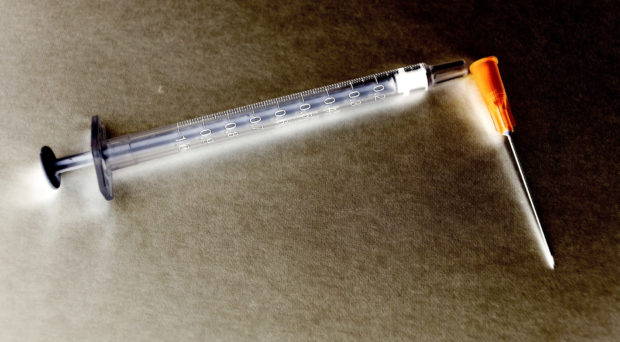
Since 2006, HRI has mapped the response to drug-related HIV and viral hepatitis epidemics in policy and practice around the world. Collaborating with service providers, academics and advocates to pull in information from every corner of the globe, this is the only project of its kind. But it ultimately tells a tale of political neglect, unchecked epidemics and systemic human rights violations.
Released last month, the 5th edition of the Global State of Harm Reduction report shows that of 158 countries where injecting drug use is reported, more than a third (68) still do not provide needle and syringe programs and half (78) do not offer opioid substitution therapy.
For the first time, we report no progress in the number of new countries establishing needle and syringe programs. This is especially worrying given the increasing amphetamine injecting reported in all regions, a practice already linked to HIV outbreaks in several countries.
The benefits to employing harm reduction approaches are many – harm reduction saves lives, saves money and promotes the dignity and human rights of people who use drugs. With a vast evidence base behind them, the implementation of harm reduction programs is a no-brainer from health, economic and human rights perspectives.
Despite this, UNAIDS report that between 2010-2014, only 3.3% of HIV prevention investment went to programs reaching people who inject drugs. Less than one third of this came from governments, with international donor funds accounting for the rest. But key donors are shifting funds away from middle-income countries where most people who inject drugs live and governments are unable or unwilling to invest, leaving harm reduction funding in increasing crisis.
In contrast, every year an estimated US$100 billion is spent on ineffective and often harmful drug control enforcement measures. Mathematical modelling commissioned by HRI shows that as little as 7.5% of punitive drug control spending redirected to harm reduction could virtually eliminate AIDS among people who inject drugs by 2030.
Instead, this money fuels mass incarceration, with one in every five prisoners held on drug-related charges, the vast majority for personal use or possession. Up to 90% of people who inject drugs will be incarcerated at some point in their lives. Given this, and the increased HIV, hepatitis C and drug-related overdose rates within prisons, it is shocking that only 8 countries have even one prison-based needle and syringe program and only 6 provide overdose prevention training and treatment within at least one prison.
The provision of harm reduction, both inside and outside of prisons, is a recognised component of the right to health, a legally binding human rights obligation. In 2016, high-level UN processes on drugs and HIV urged governments to scale up harm reduction programs within and outside prisons. The Sustainable Development Goals commit us to ending AIDS by 2030, a target impossible to realize without harm reduction.
Yet already in 2015, the international target to halve new HIV infections among people who inject drugs was missed by more than 80%. As this staggering failure shows, maintaining the status quo will simply set us up to fail. More alarmingly, our latest research shows that the scale up of harm reduction has ground to a halt, and in a number of countries coverage has decreased.
Unsurprisingly, this backtracking is reflected in declining UN leadership. In his 2015 review on HIV and AIDS, the UN Secretary General described the 80% failure as “mixed progress”, one of several occasions where the UN missed a critical opportunity to call out governments that fail to support harm reduction. No new target on people who inject drugs was included in the 2016 UN Political Declaration on Ending AIDS or in the outcome document of the 2016 UN General Assembly Session on Drugs. Since these two processes, UNAIDS PCB has announced plans to cut funding to the HIV team of the UN Office on Drugs and Crime—the lead agency for people who inject drugs in the UN “family”— by 75%, a cut that will see UNODC’s work on prisons and on linkages between law enforcement, health, prisons and drug control agencies reduced by half. These cuts, and the possibility of finding some interim funding to mitigate their impact, will be decided at the PCB meeting. HRI is urging governments attending to step up and vote for this interim funding option.
Of course beyond this decision and the PCB, the risk that people who inject drugs will be sidelined and marginalized still looms large. Our latest Global State of Harm Reduction report shows unequivocally that the rhetoric of ‘leaving no-one behind’ is not being matched by action. It is now time for leadership – and vitally, investment – from governments, donors and UN agencies.
Comments